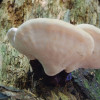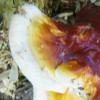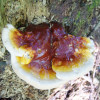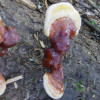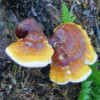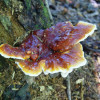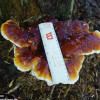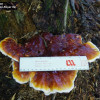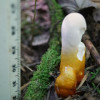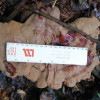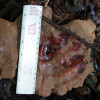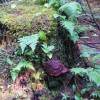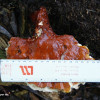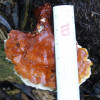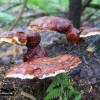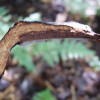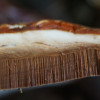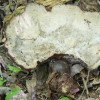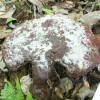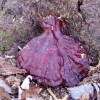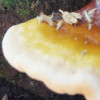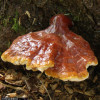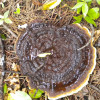Edible, therapeutic and toxic mushrooms
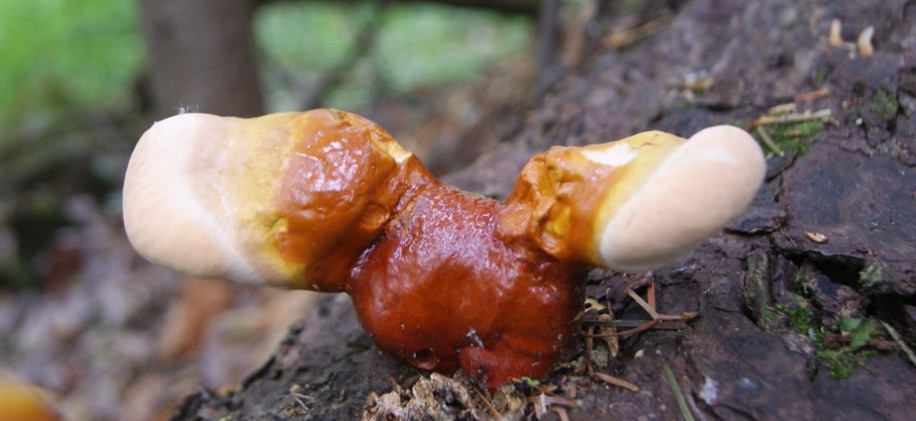
Stalk
Often lateral and vertical, well developed and concolorous with the cap, reddish brown, lacquered.
Flesh
Stained or zoned flesh of pale fawn to greyish brown colors, with a darker area near the layer of tubes. Stipe flesh concolorous and continuous with the cap. In very old specimens, the flesh turns pale brown.
Comments
Send a comment
The trees on which we find the Lackered Polypore and the Hemlock Varnish Shelf seems to be the criterion for identifying these two species, except for those found on birches. The criteria concerning the color of the cap margin and the number of pores per mm are contradictory in the descriptions given by various authors and according to our own observations.
For more informations
Formation
For those who wish to improve their knowledge, register for the Foundation's training program on this site and receive a certificate confirming the fruit of your efforts.






























